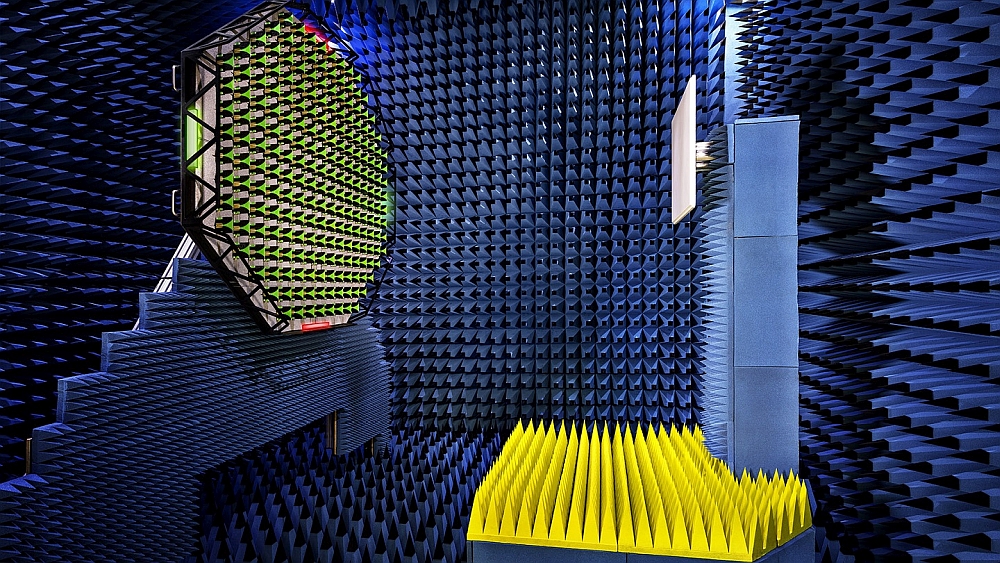- Rohde & Schwarz is offering a software update and a new calibration method that make its R&S PWC200 plane wave converter more accurate.
- This makes the solution suitable for testing 5G base stations using massive MIMO antenna systems.
- It is designed for use in R&D as well as for compliance, quality assurance and production testing.
- The new software version will be pre-installed on the new plane wave converters. A software update will also enable existing R&S PWC200s to take advantage of the new features.
The level of integration of 5G base stations in the FR1 frequency range is increasing, as a new generation of base stations, designated the 1-O type, is becoming more and more common. The 1-O type base stations operate at FR1 frequency range and they have antenna arrays with integrated transceivers, without any access to internal RF ports. This requires all conformance and production testing to be performed over-the-air (OTA). However, OTA testing can be technically challenging.
For accurate OTA measurements, signal waves sent from the antenna must be plane when reaching the device under test (DUT). The area encompassing the DUT where the waves are plane is called the quiet zone (QZ). This can be achieved through a large distance between the antenna and the DUT, resulting in large and expensive shielding chambers. Rohde & Schwarz offers an OTA test solution based on CATR technology where a gold-plated reflector is used to create the plane waves, allowing the DUT to be relatively close to the antenna. However, with large DUTs such as base stations, the size of the high-precision mirror would be prohibitively large and increase the price of the system considerably. With a solution based on the PWC technology in its OTA test portfolio, Rohde & Schwarz is broadening the options available to the users, especially for large DUTs.
The R&S PWC200 needs four times less space than solutions based on other OTA technologies such as CATR. The R&S PWC200 is based on a phased antenna array consisting of 156 wideband Vivaldi antennas to form plane waves within an adjustable QZ, placed in the radiating near field of the DUT. It functions as a planar-wave synthesizer and near-field scanner and is designed for 5G massive MIMO base station testing for real-time radiated power and transceiver measurements (EVM, ACLR, SEM, etc.) in a controlled anechoic test chamber environment. The R&S PWC200 features an internal RF verification solution. This makes it possible to perform precise monitoring and correction of the R&S PWC200 antenna without using an external antenna.
Launched two years ago, the R&S PWC200 plane wave conversion solution has been accepted as OTA base station measurement methodology by 3GPP in the conformance test specifications for NR (3GPP TS 38.141-2) and advanced antenna system (AAS) for LTE and WCDMA (3GPP TS 37.145-2). The latest updates improve several aspects of the solution. As the 5G frequency bands vary from country to country, the original frequency range of the R&S PWC200 from 2.3 GHz to 3.8 GHz was extended to now cover 1.7 GHz to 5 GHz. This increases applications for users worldwide. Additionally, thanks to a novel approach to the PWC calibration the accuracy of the plane wave synthesis has been increased even further. This results in three times better accuracy in magnitude and phase uniformity compared to the previous solution.






